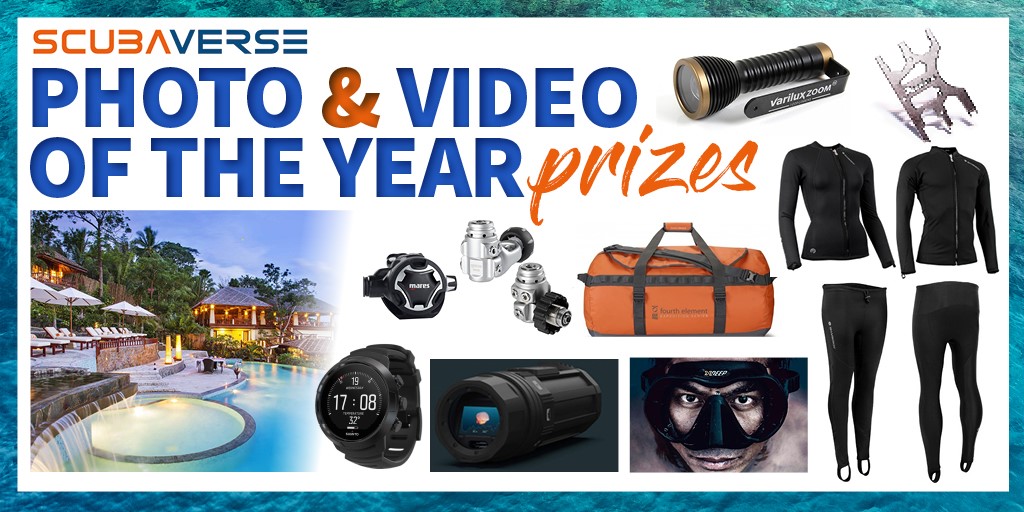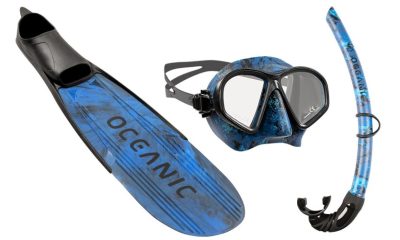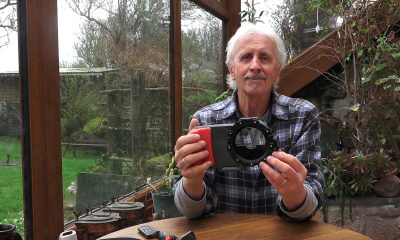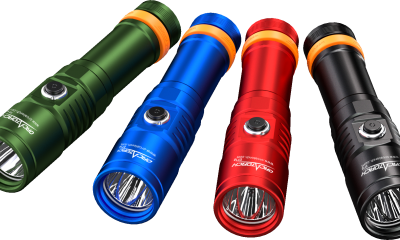News
Announcing the Winner of Scubaverse.com’s Video of the Year 2021
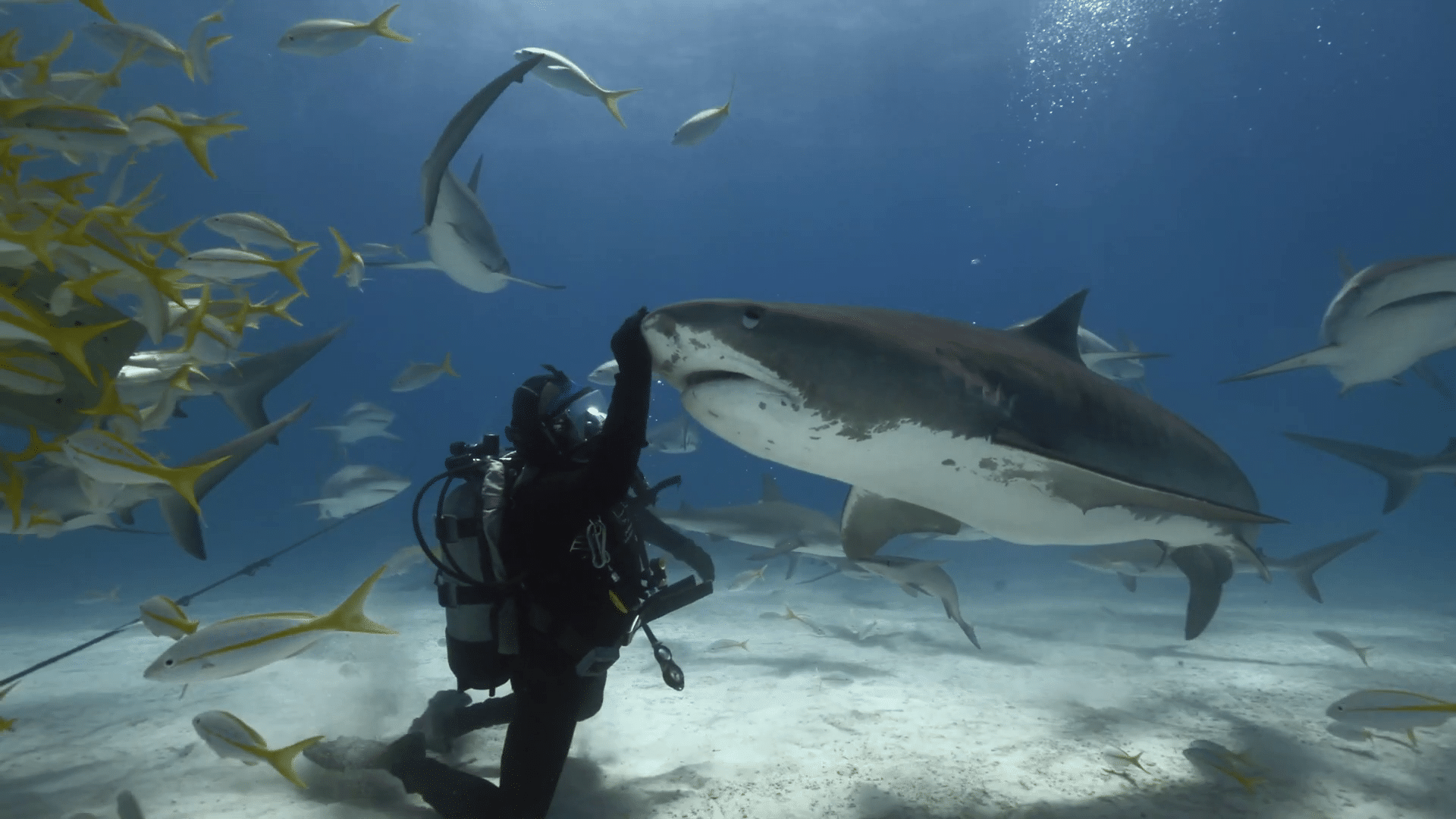
2021 has been an incredible year for entries into the Scubaverse monthly video competition. There has been quality as well as quantity. Judging each month has been difficult as all the films were excellent in one way or another, be it the story telling, camerawork, narration, lighting, animal behaviour, artistic flare, editing. All were great to watch and I look forward to seeing entries in 2022.
To pick an overall winner for 2021 I have had help from Sven Harms and Lindsay Lynch from SeaLife Cameras and also Jake Davies, marine biologist and videographer.
Winner of Scubaverse.com’s Video of the Year 2021
Winner: Tiger (Shark) King by Clayton Conn
Clayton Conn, freelance journalist and film maker who won the November competition wrote: ‘It was a great experience and privilege to participate in the Scubaverse monthly video contest. There are very few dedicated places online that underwater filmmakers, novice to experienced, can share their videography and cinematography with such accessibility and receive positive yet critical feedback. No sense of negative competition here, rather a place where all underwater filmmakers can level up together’.
Jake Davies wrote of the film: ‘A very well produced video using a huge amount of production skills throughout. The video is full of high quality camera work above and below water and beautifully edited. Having an interviewee is great in telling a personal storyline and gets lots of messages across more efficiently along with keeping engagement. Top quality and very well produced – great work on creating such an informative piece with lots of important information and messaging’.
There was a special note from Sven Harms and Lindsay Lynch about ‘Breathing under the sea by Noemie Stroh’ our March winner: ‘We loved March for the really flowing and lively wildlife. The editing was very good and it kept us engaged for the entire video – this was the deciding part’.
Thanks again to all those who took part and I wish you a great filming 2022. That you to all the competition sponsors.
The winner of the 2021 competition takes away an incredible assortment of prizes:
7 Nights at Bunaken Oasis Dive Resort, Indonesia
Bunaken Oasis redefines diving in Bunaken. Positioned very much at the luxury end of the spectrum, Bunaken Oasis’ aim is to provide a 5-star luxury diving experience whilst keeping its ecological footprint to a minimum.
Find out more about Bunaken Oasis Dive Resort at www.bunakenoasis.com.
Suunto D5 Dive Computer
The Suunto D5 is designed to be so clear and easy-to-use that you can just enjoy and focus on exploring the wonderful underwater world.
Find out more about the Suunto D5 dive computer here.
Paralenz Vaquita Underwater Camera
Paralenz Vaquita is a small and powerful underwater camera with a simple mission: to enable you to seamlessly capture and share brilliant underwater videos.
Find out more about the Paralenz Vaquita Underwater Camera here.
Mares Dual ADJ 62X Regulator
The Dual Adj 62X scuba diver regulator is the smallest and most compact first stage ever made by Mares. That’s why it’s the perfect travel companion for divers all over the world.
Find out more about the Mares Dual ADJ 62X Regulator here.
Sharkskin Titanium Chillproof
The Titanium Chillproof has FIR reflective technology that reflects and retains the Far Infrared Heat Energy from our bodies back into our bodies subsequently causing a rise in temperature, increased blood flow and improved metabolic function – i.e. we will be warmer.
Find out more about the Sharkskin Titanium Chillproof here.
XDEEP Radical Mask
The XDEEP Radical frameless mask allows you to take in more of what is around you, enhancing both the dive experience and your situational awareness of you, your team and the environment.
Find out more about the XDEEP Radical Mask here.
Northern Diver Varilux Zoom 1000 Lumen Rechargeable Dive Torch
The three white light settings make the ‘Varilux Zoom’ a fantastic multi-purpose dive torch.
Find out more about the Northern Diver Varilux Zoom 1000 Lumen Rechargeable Dive Torch here.
Fourth Element Expedition Series Duffel Bag
The Fourth Element Expedition Series Duffel Bag is made from tough and enduring heavy-duty mesh PVC and the base is double lined for durability.
Find out more about the Fourth Element Expedition Series Duffel Bag here.
Pandora-Lab Multi Tool
Pandora Multi Tool is a diver’s ‘Swiss Army knife’ designed to ease field maintenance where and when it matters.
Find out more about the Pandora-Lab Multi Tool here.
Blogs
Northern Red Sea Reefs and Wrecks Trip Report, Part 2: Wall to Wall Wrecks

Jake Davies boards Ghazala Explorer for an unforgettable Red Sea diving experience…
The second day’s diving was a day full of wreck diving at Abu Nuhas, which included the Chrisoula K, Carnatic, and Ghiannis D. The first dive of the day was onto the Chrisoula K, also known as the wreck of tiles. The 98m vessel remains largely intact where she was loaded with tiles which can be seen throughout the hold. The stern sits at 26m and the bow just below the surface. One of the highlights of the wreck is heading inside and seeing the workroom where the machinery used for cutting the tiles are perfectly intact. The bow provided some relaxing scenery as the bright sunlight highlighted the colours of the soft coral reef and the many reef fish.

Following breakfast, we then headed to the next wreck, which was the Carnatic. The Carnatic is an 89.9m sail steamer vessel that was built in Britain back in 1862. She ran aground on the reef back in 1869 and remains at 27m. At the time, she was carrying a range of items, including 40,000 sterling in gold. An impressive wreck where much of the superstructure remains, and the two large masts lay on the seafloor. The wooden ribs of the hull provide structures for lots of soft corals, and into the stern section, the light beams through, bouncing off the large shoals of glass fish that can be found using the structure as shelter from the larger predators that are found outside of the wreck.

The final wreck at Abu Nuhas was the Ghiannis D, originally called ‘Shoyo Maru,’ which was 99.5m long and built in Japan back in 1969 before becoming a Greek-registered cargo ship in 1980. The ship then ran aground on the reef on April 19th, 1983, and now sits at the bottom at a depth of 27m. Heading down the line, the stern of the ship remains in good condition compared to the rest of the hull. The highlight of the wreck, though, is heading into the stern section and down the flights of stairs to enter the engine room, which remains in good condition and is definitely worth exploring. After exploring the interior section of the ship, we then headed over to see the rest of the superstructure, where it’s particularly interesting to see the large table corals that have grown at the bow relatively quickly considering the date the ship sank. After surfacing and enjoying some afternoon snacks, we made sure everything was strapped down and secured as we would be heading north and crossing the Gulf of Suez, where the winds were still creating plenty of chop.

The next morning, it was a short hop to Ras Mohammed Nature Reserve for the next couple of days of diving. The 6am wake-up call came along with the briefing for the first site we would be diving, which was Shark & Yolanda. The low current conditions allowed us to start the dive at Anemone City, where we would drift along the steep, coral-filled wall. These dives involved drifts, as mooring in Ras Mohammed wasn’t allowed to protect the reefs. As a dive site, Shark & Yolanda is well-known and historically had a lot of sharks, but unfortunately not so many in recent years, especially not so early in the season. However, there was always a chance when looking out into the blue.

The gentle drift took us along the steep walls of the site, with plenty of anemone fish to be seen and a huge variety of corals. It wasn’t long into the dive before we were accompanied by a hawksbill turtle, who drifted with us between the two atolls before parting ways. Between the two reefs, the shallow patch with parts of coral heads surrounded by sand provided the chance to see a few blue-spotted stingrays that were mainly resting underneath the corals and are always a pleasure to see. With this being the morning dive, the early sunlight lit up the walls, providing tranquil moments. Looking out into the blue, there was very little to be seen, but a small shoal of batfish shimmering underneath the sunlight was a moment to capture as we watched them swim by as they watched us.

Towards the end of the dive, we stopped at the wreck of the Jolanda where the seafloor was scattered with toilets from the containers it was carrying. This provided a unique site to make a safety stop, which was also accompanied by a large barracuda slowly swimming by, along with a hawksbill turtle calmly swimming over the reef as the sun rays danced in the distance.
For the next dive, we headed north to the Strait of Tiran to explore the reefs situated between Tiran Island and Sharm El Sheik, which were named after the British divers who had found them. We started on Jackson before heading to Gordons Reef, where we also did the night dive. All the atolls at these sites provided stunning, bustling coral reefs close to the surface and steep walls to swim along, which always provided the opportunity to keep an eye out for some of the larger species that can be seen in the blue. Midwater around Jackson Reef was filled with red-toothed triggerfish and shoals of banner fish, which at times were so dense that you couldn’t see into the blue. Moments went by peacefully as we enjoyed the slow drift above the reef, watching these shoals swim around under the mid-afternoon sun.

The night dive at Gordon’s Reef was mainly among the stacks of corals surrounded by sand, which was great to explore under the darkness. After some time circling the corals, we came across what we were really hoping to find, and that was an octopus hunting on the reef. We spent the majority of the dive just watching it crawl among the reef, blending into its changing surroundings through changes in colour and skin texture. It’s always so fascinating and captivating to watch these incredibly intelligent animals, in awe of their ability to carry out these physical changes to perfectly blend into the reef. Before we knew it, it was time to head back to the boat to enjoy a well-deserved tasty dinner prepared by the talented chefs onboard.
Check in for the 3rd and final part of this series from Jake tomorrow!
To find out more about the Northern Red Sea reef and wrecks itineraries aboard Ghazala Explorer, or to book, contact Scuba Travel now:
Email: dive@scubatravel.com
Tel: +44 (0)1483 411590
Photos: Jake Davies / Avalon.Red
Marine Life & Conservation
Double Bubble for Basking Sharks

 The Shark Trust is excited to announce that, for two more days only, all donations, large or small, will be doubled in the Big Give Green Match Fund!
The Shark Trust is excited to announce that, for two more days only, all donations, large or small, will be doubled in the Big Give Green Match Fund!
Donate to Basking in Nature: Sighting Giants
The Shark Trust is hoping to raise £10k which will be doubled to £20k. This will go towards Basking in Nature: Sighting Giants. And they need YOUR help to reach they’re goal.
The Shark Trust’s citizen science project is to monitor and assess basking sharks through sightings; encouraging data collection, community engagement, and promoting nature accessibility. This initiative aims to enhance health and wellbeing by fostering a deeper connection with British Sharks.
Campaign Aims
- Increase citizen science reporting of Basking Sharks and other shark sightings to help inform shark and ray conservation.
- Provide educational talks about the diverse range of sharks and rays in British waters and accessible identification guides!
- Create engaging and fun information panels on how to ID the amazing sharks and rays we have on our doorstep! These can be used on coastal paths around the Southwest. With activities and information on how you can make a difference for sharks and rays!
- Promote mental wellbeing through increasing time in nature and discovering the wonders beneath the waves!
Donate, and double your impact. Click Here
-

 News3 months ago
News3 months agoHone your underwater photography skills with Alphamarine Photography at Red Sea Diving Safari in March
-

 News3 months ago
News3 months agoCapturing Critters in Lembeh Underwater Photography Workshop 2024: Event Roundup
-

 Marine Life & Conservation Blogs2 months ago
Marine Life & Conservation Blogs2 months agoCreature Feature: Swell Sharks
-

 Blogs2 months ago
Blogs2 months agoMurex Resorts: Passport to Paradise!
-

 Blogs2 months ago
Blogs2 months agoDiver Discovering Whale Skeletons Beneath Ice Judged World’s Best Underwater Photograph
-

 Gear Reviews2 months ago
Gear Reviews2 months agoGear Review: Oceanic+ Dive Housing for iPhone
-

 Marine Life & Conservation2 months ago
Marine Life & Conservation2 months agoSave the Manatee Club launches brand new webcams at Silver Springs State Park, Florida
-

 News3 months ago
News3 months agoWorld’s Best Underwater Photographers Unveil Breathtaking Images at World Shootout 2023


